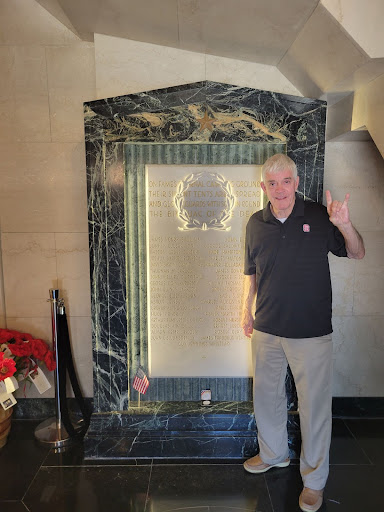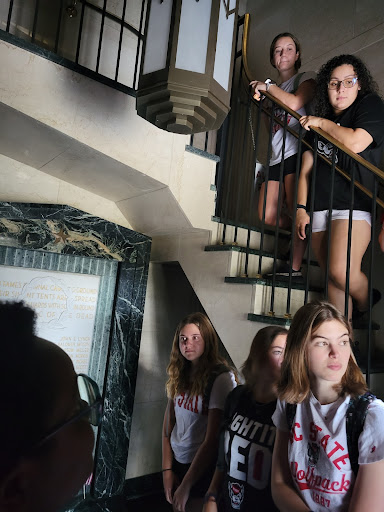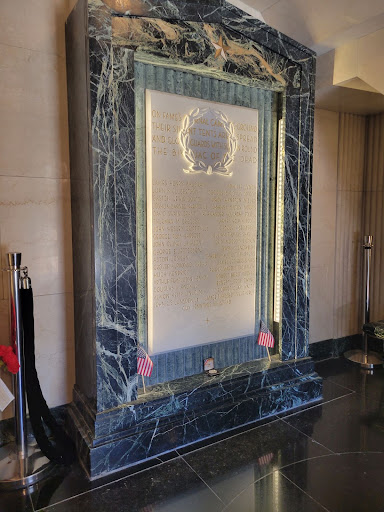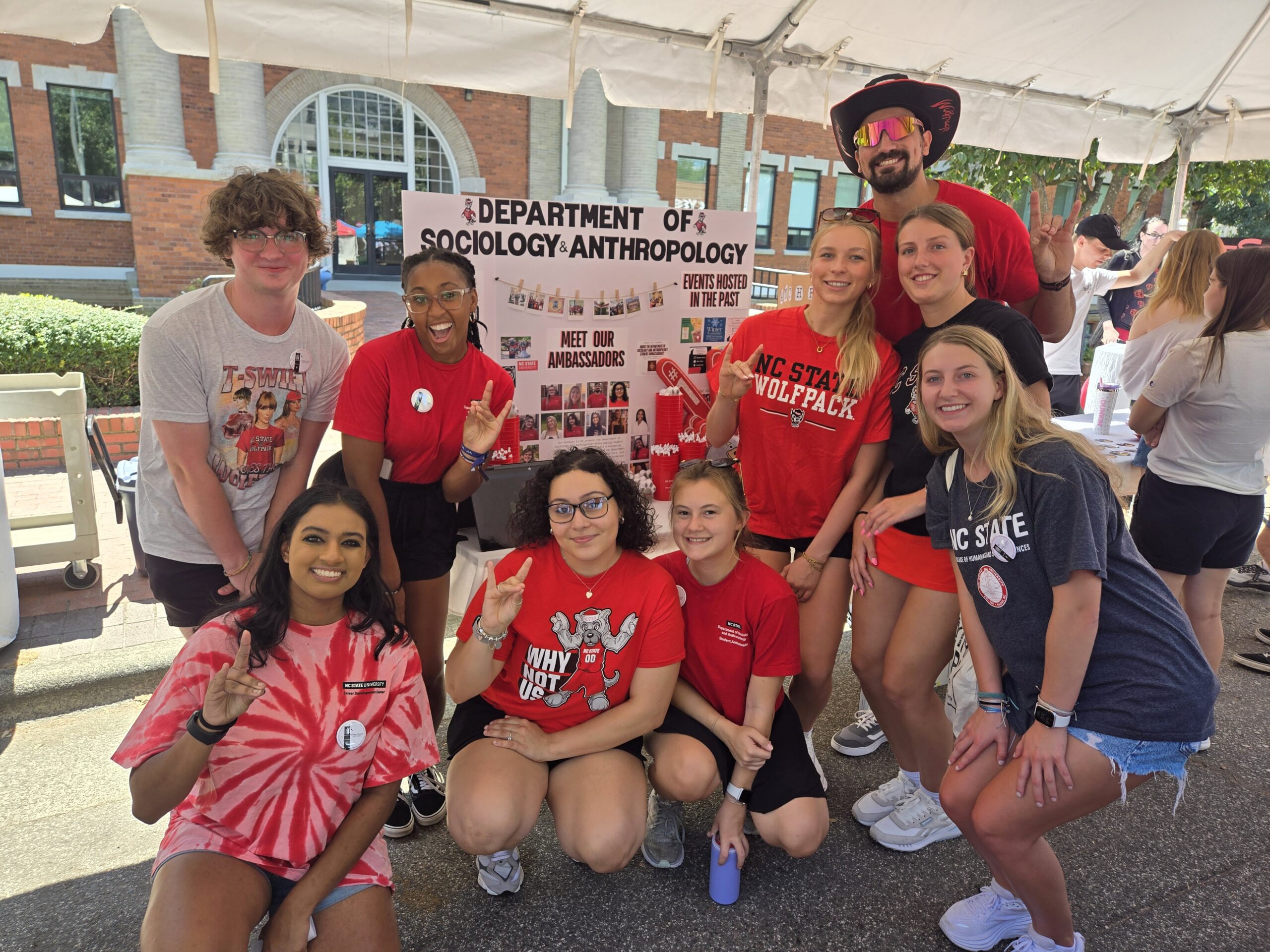MORE THAN LIGHTING IT RED: THE STORY OF THE BELL TOWER
An Interview with Dr. Tom Stafford resident expert on all things Bell Tower and Vice Chancellor for Student Affairs (retired)

Most people know the Bell Tower as a symbol of NC State. It is an iconic emblem, especially after a game when we “Light it Red.” But the meaning and history of the Bell Tower goes far beyond this tradition.
The resident expert on all things Bell Tower is Dr. Tom Stafford -as in Stafford Commons- who served as the Vice Chancellor for Student Affairs and worked at NC State for forty-one years before his retirement. Dr. Stafford was mentored by Banks Talley -as in Talley Student Union- and had his office close to the Bell Tower. Dr. Stafford explained that “a student leader came into my office in Holladay Hall and he wanted to know if I would take his group inside the Bell Tower. Once they got away from the tour they started telling their friends about it and word spread and more people asked me to take them on the tour. And that’s how the Bell Tower tour got started.” With over 1,000 tours given, Dr. Stafford’s Bell Tower Tour has become a tradition itself at NC State.
Holladay Hall is where the university, then called the North Carolina College of Agriculture and Mechanic Arts, began. It was the first and only building on campus. Holladay Hall is the oldest and most historic building on campus.
One surprising fact about the Bell Tower is that it actually never had bells at the top. Originally, there were just speakers. In 2017, an alumnus and his wife brought their son up to NC State for freshman orientation, and they happened to meet the guy that was raising money to put real bells in the Bell Tower. They decided to give the university six and a half million dollars with the condition that the bells would be played for their son’s graduation. The money also went towards renovations and installing an incline to make the Bell Tower more accessible.
Dr. Stafford described the shrine room, which is housed within the Bell Tower’s walls. “I like to tell people that the way the shrine room looks now, compared to what it looked like before the renovation, is really hard to describe. You almost have to see it to completely understand it and appreciate it.” Green marble, a staircase adorned with a brass handrail, art deco chandelier and light fixtures, and a beautiful oculus are just some of the key features of the shrine room.

The most important part of the shrine room though is the white marble plaque with gold leaf letters. Dr. Stafford explains that “The alumni who built this tower wanted to remember and honor their fellow alumni who died while they were in military service. The plaque that is inside the shrine room is where they are remembered, and where they are honored. In addition we’ve now added artificial red poppies in the corner, which helps you have a feeling of who that person was. There’s a picture of each person whose name is on the plaque and there is information about him on that tag. I like to say that the plaque is the most beautiful and the most sacred place on campus.”
But there is one name carved into the plaque unlike the others, and you wouldn’t know which it is just by looking. After the names were all on the plaque, they discovered that they included the name of a man who was still alive. He had been critically wounded in combat, so the college assumed he was going to die and included his name. When he recovered, he came back and found his name along with the names of the alumni who had died. So, they decided the best way to solve that problem was to change his name on the plaque. George L Jeffers was changed to George E Jefferson. Dr. Stafford explains that “the new name was designated as a symbolic name that represents all the NC State Alumni that went into the war. Today, I like to say it represents all the NC State alumni who serve in our nation’s military.” In fact, Dr. Stafford says the thing he wants people to remember most from his Bell Tower Tours is that “This beautiful tower was built as a sacred military memorial.” The symbols on the tower are military symbols. The Bell Tower represents so much more than just Lighting it Red.

The Department of Sociology and Anthropology Student Ambassadors had the opportunity to go on one of Dr. Stafford’s Bell Tower Tours. Before the tour, the Student Ambassadors only knew that the Bell Tower was built in the early 1900s and about Lighting it Red. They agreed that most NC State students do not know the history or the meaning of the Bell Tower. The Student Ambassadors said that some of the most memorable stories about the Bell Tower were the symbolic name carved in the plaque, the proposals that have taken place in the shrine room, and the Bell Tower being built as a military memorial. Anthropology major Dmitri Fisher said that the story that most stood out to him after the Bell Tower tour was how the bells got installed. He said it was nice to hear how it was an alumni that wanted to be a part of the history and community of NC State that donated the money. It really spoke to the community at large and the fact that you are always a member of the Wolfpack. The Student Ambassadors were also able to see old photographs of the construction process, hear the bells ring from inside the shrine room, go up the staircase to see the inside structure, and rub a piece of the Bell Tower that gives students all A’s according to the superstition.
Rena Lustig, a Sociology major with a minor in Statistics, explained how being a Sociology major has impacted the meaning of the Bell Tower to her. Rena says she thinks of the Bell Tower in terms of it being a WW1 memorial and the deeper meaning attached. She pointed out how the meaning was attached throughout the construction of the Bell Tower as it was built to honor those who had died. Rena gives campus tours and always points out the Bell Tower as a symbol of NC State to visitors.
For Kayla Ortiz, a Criminology major with minors in law and justice and forensic science, being a Criminology major has impacted the meaning of the Bell Tower by showing how different elements of a community can impact one person’s life. She said that the Bell Tower symbolizes the importance of community to students at NC State. The sense of community at NC State is what made her decide to attend NC State as an out-of-state student.
To Dmitri Fisher, an Anthropology major, the Bell Tower is about community, heritage, and shared identity and shared ideals. He said the Bell Tower was a symbol of how the school has changed and adapted generationally. It is emblematic of shared cultures and shared ideals. “No matter where you came from, the Bell Tower still becomes part of your identity because it is something that we all share. When you see it, you think about the school and NC State. This is our campus. This is our symbol.”
Pictures are from the Department of Sociology and Anthropology Student Ambassador Team tour


This article was written by Katie Call, Sociology major and Department of Sociology and Anthropology Student Ambassador



